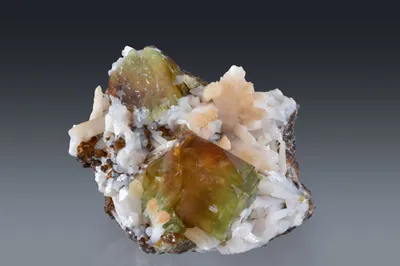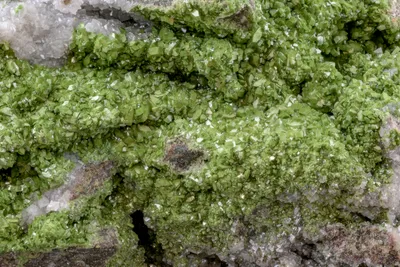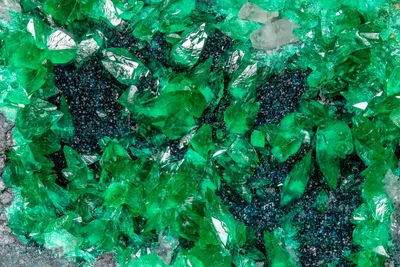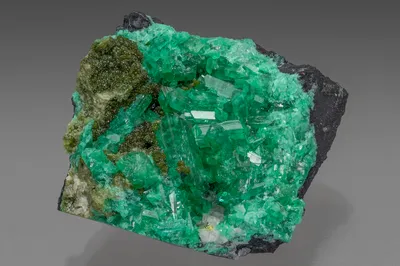Title
gaitite
Composition
Ca2Zn(AsO4)2.2H2O
Crystal System
Triclinic
Status at Tsumeb
Confirmed
Abundance
Extremely rare
Distribution
Second and third oxidation zones.
Paragenesis
Supergene.
Type Locality
Yes
Entry Type
Species TSNB138
Type Mineralogy
During the study and description of prosperite (Gait et al. 1979) a mineral initially identified as talmessite was found on the same specimen, forming coatings on the prosperite and other minerals. However, the "talmessite" crystals were strongly zoned with a wide variation in the Mg:Zn ratio and with a dominance of zinc (over magnesium). Gaitite, IMA 1978-047, was described by Sturman and Dunn (1980). It is the zinc analogue of talmessite; the two minerals are isostructural and form a complete solid solution series. It is also dimorphous with zincroselite. Gaitite was named to honour Dr Robert I. Gait, curator of mineralogy at the Royal Ontario Museum. The type specimen was originally submitted for study by Mr Prosper J. Williams, a Toronto-based mineral dealer. Type material is conserved at the Smithsonian Institution (NMNH 144 799; a polished section) and at the Royal Ontario Museum (M35388).
General Notes
On the type specimen, gaitite forms a very thin polycrystalline coating on prosperite, adamite and conichalcite over a matrix of altered chalcocite (Sturman and Dunn 1980). The gaitite is colourless with a vitreous lustre. A few small individual crystals of gaitite (to a maximum of c. 1 mm) were also noted.
The location from which the type specimen (for gaitite and prosperite) was recovered is unknown; however, a subsequent discovery was made in the East 9 Pillar on 31 Level for which Keller and Bartelke (1982) proposed the following paragenetic sequence:
chalcocite >> cuprite >> (conichalcite + austinite) >> adamite >> prosperite >> gaitite >> austinite >> baryte
Gaitite has been identified and verified by microprobe and XRD analysis on a specimen in a private collection which is reliably attributed to 44 Level in the third oxidation zone. It occurs as small white vitreous spherules associated with ferrilotharmeyerite, helmutwinklerite, mawbyite and zincolivenite.
Associated Minerals
adamite; austinite; baryte; chalcocite; claudetite (?); conichalcite; cuprite; ferrilotharmeyerite; helmutwinklerite; hörnesite; johillerite; keyite; koritnigite; köttigite; ludlockite; mawbyite; o’danielite; prosperite; quartz; schultenite; talmessite; zincolivenite







